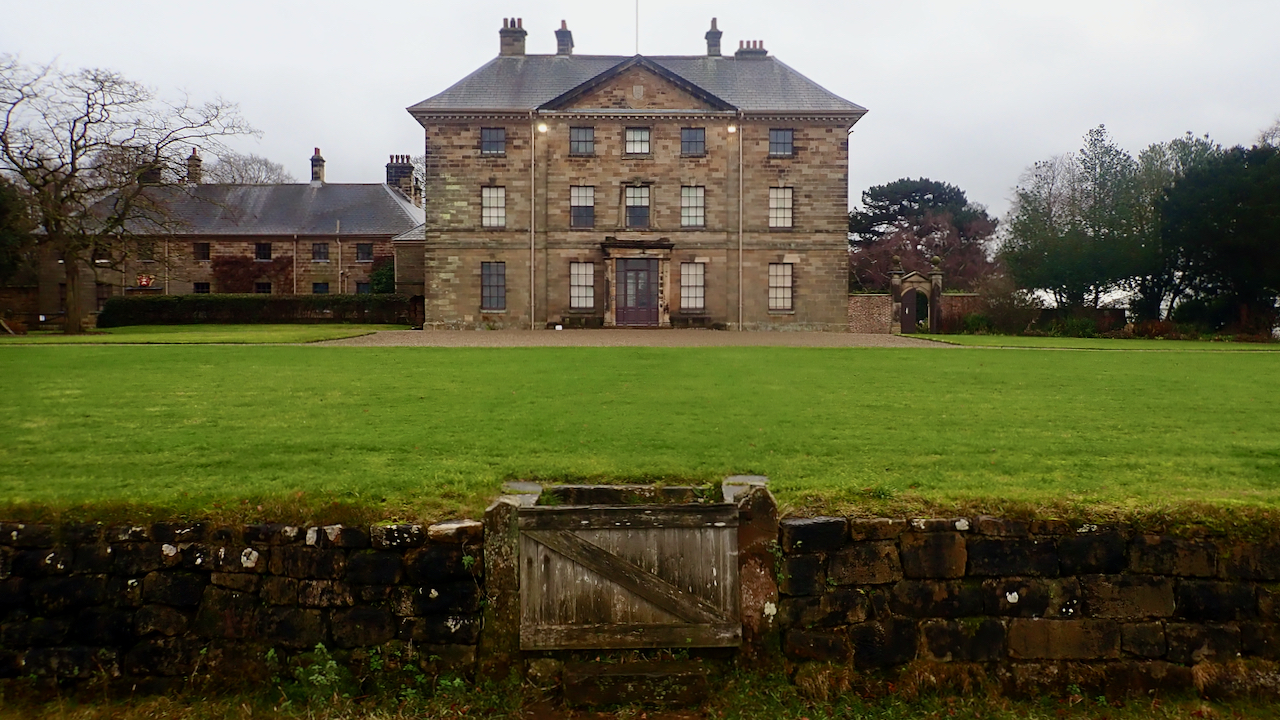My volunteering with the National Trust has restarted again after the lockdown although the use of Trust vehicles for transport is not allowed due to Covid precautions. This means that trips to Bransdale and the Bridestones will have to wait until we have all been vaccinated.
So north to help out in the construction of a new pond at Ormesby Hall, a Trust property in Middlesbrough. Architecturally, it has “five bays and two and a half storeys, ashlar-faced and with a three-bay pediment and a hipped roof, and no decorative ambitions” according to Pevsner. He seems to see features others take for granted, but I don’t think he was impressed. Apparently, internally it is more distinctive but I didn’t get the chance to look around. I quite like the ha-ha which is still doing its job of keeping the sheep off the lawn.
It was an earlier James Pennyman that had brought the estate in 1600, and it remained in the family until yet the final James, Colonel James Pennyman, died in 1961 childless, whereupon it was bequeathed to the National Trust although his widow Ruth Pennyman continued to live here until her death in 1983.
This 20th-century James was more familiarly known as Jim so I’d best refer to him by that diminutive to ease confusion. Jim was a military man through and through but was severely wounded in 1914. Ruth Knight was his second wife, his first having died in childbirth. The Pennymans were very socially concerned, perhaps Ruth more so than Jim, and took a deep interest in the local community. In 1931, they set up a 5½ acre farm in Boosbeck to help unemployed ironstone miners. Sixty men pledged to work the farm sharing the produce between themselves. The land was initially uncultivated and acquired the name Heartbreak Hill because of the hard work that had to be put in. Other miners were helped to learn carpentry and other skills through the ‘Boosbeck Industries’ venture. Their cultural health was not ignored, Ruth was instrumental in promoting the arts both in Boosbeck and at Ormesby where, until her death, the Hall was used for theatrical performances and workshops.
In another example of the Pennymans’ philanthropism: after visiting Barcelona in 1937, Ruth and had become concerned about the fate of child refugees fleeing the Spanish Civil War. She persuaded Sir Alfred Pease to allow Hutton Hall, which was standing empty at the time, to be used to house twenty child evacuees from the Basque region of Spain.

Leave a Reply